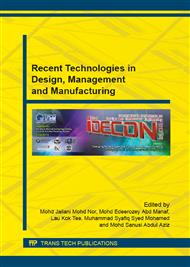p.374
p.380
p.385
p.391
p.397
p.402
p.407
p.412
p.417
Effect of Neodymium and Samarium on the Properties of Bismuth Titanate Ceramics
Abstract:
This paper reported the doping effect on BIT by two different rare-earth compounds i.e. Nd and Sm, each at different mole content (0.25, 0.5, 0.75 and 1.0 mol). The so-called single-step combustion synthesis was used to produce the as-combusted powders, whereby the intermediate calcination step was then eliminated. This method was able to sinter the samples at temperature as low as 1000°C for 3 h. The entire ceramics were characterized for phase detection and stability, microstructure and dielectric properties. It was found that the single phase BIT was successfully formed with Nd and Sm doping. However, little content of pyrochlore phase was detected in the sample with Sm doping particularly at high mole content. (0.5 to 1.0 mol). Besides, a remarkable decrease in the grain size with better microstructure was observed particularly at high mole content (1.0). The improvement in microstructure led to the increase in dielectric constant with low dielectric loss.
Info:
Periodical:
Pages:
397-401
Citation:
Online since:
May 2015
Keywords:
Price:
Сopyright:
© 2015 Trans Tech Publications Ltd. All Rights Reserved
Share:
Citation:


